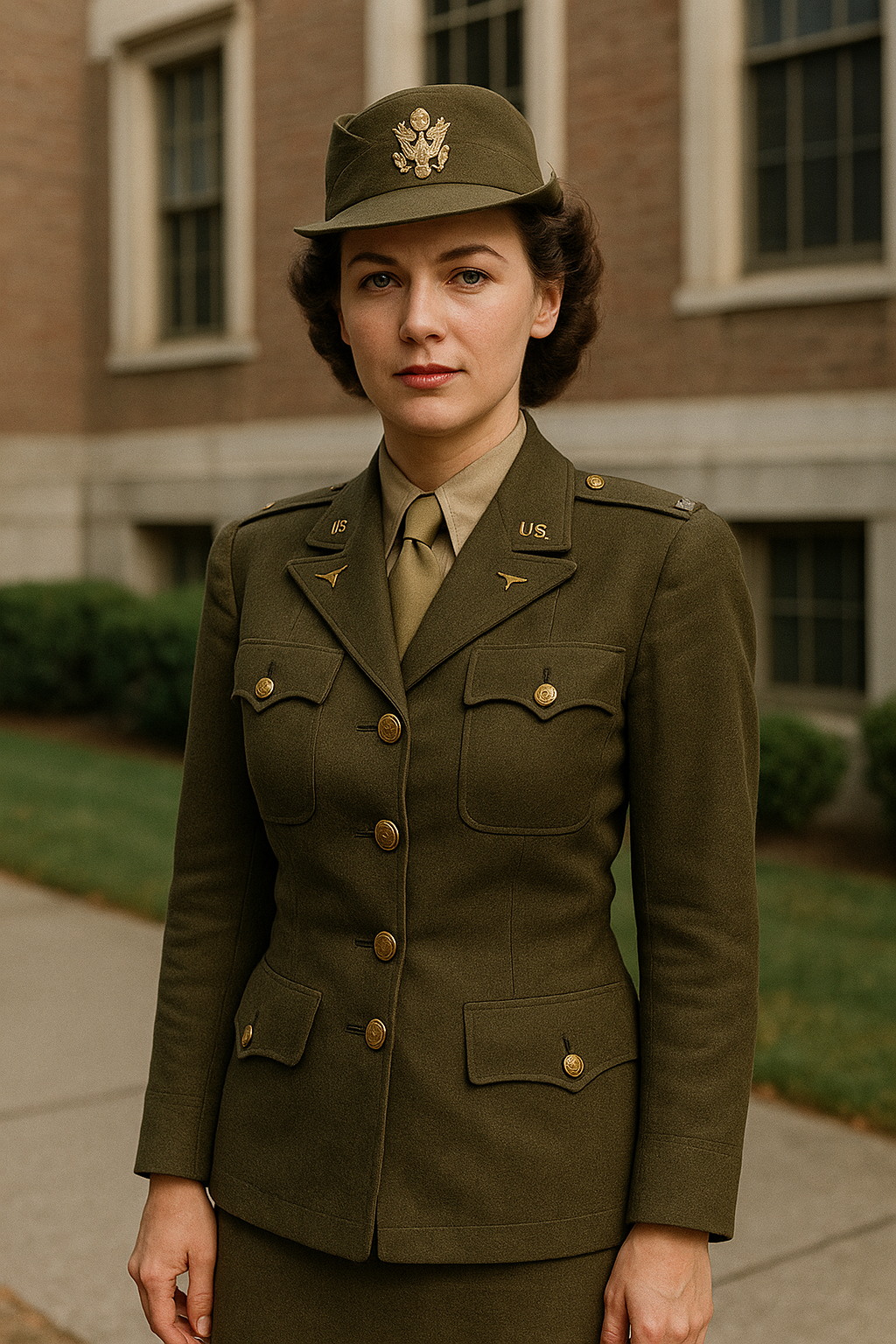
Female Military Uniforms: A Complete Guide for History Lovers and Collectors
Published on Sep 30, 2025
Introduction: Why Female Military Uniforms Matter
Did you know that more than 400,000 American women served in uniform during World War II? That’s a staggering number, yet men’s combat gear often overshadows the uniforms they wore. Female military uniforms tell a story not just of war, but of resilience, identity, and progress.
Whether you’re a history buff, WW1 and WW2 reenactor, or a collector of vintage uniforms, understanding the evolution of these garments helps you appreciate their cultural and historical weight. In this guide, we’ll dive into the past, highlight 1940s female military uniforms, and provide actionable advice on collecting, preserving, and studying women’s army uniforms.
The Evolution of Female Military Uniforms Through History
Early Days: WW1 and the Birth of the Women’s Army Uniform
- Women officially began wearing structured military uniforms during World War I.
- Roles included nursing, clerical work, and support duties in organisations like the Voluntary Aid Detachments (VADs) and the Army Nurse Corps.
- Uniforms were practical: skirts with jackets, caps, and insignia adapted from men’s designs.
Example:
British WW1 nurses wore dark-blue dresses with red capes — iconic and symbolic of both service and sacrifice.
The 1940s Female Military Uniforms in WW2
WW2 saw a massive expansion of women in uniform. Over 350,000 American women joined the armed forces, including the WAC (Women’s Army Corps), WAVES (Navy), and WASPs (Army aviation uniform pilots).
- Design: Knee-length skirts, tailored jackets, garrison caps.
- Colours: Olive drab, navy blue, and khaki dominated.
- Specialisation: The army aviation uniform for WASPs included flight jackets and trousers, breaking traditional female dress norms.
This era marked the first time female military uniforms became standardised, mass-produced, and symbolically powerful.
Post-War to Modern Times
After 1945, uniforms shifted towards practicality and professional appearance.
- Trousers gradually replaced skirts.
- Modern women’s military uniforms are nearly identical to men’s, emphasising equality.
- Collectors often focus on authentic WW1 and WW2 uniforms since these are the most historically significant and rare.
Why Collect Female Military Uniforms?
For enthusiasts, collecting women’s army uniforms is more than a hobby — it’s a way of preserving history. Each item tells a personal story of courage.
Benefits of collecting:
- Connects you to WW1 and WW2 history.
- Preserves cultural heritage.
- Valuable for museums, reenactments, and educational purposes.
How to Start Collecting Female Military Uniforms (Step-by-Step)
- Research Before Buying
- Study original designs, insignia, and regulations.
- Compare WW1 vs WW2 styles.
- Start Small
- Look for accessories first: hats, patches, and belts.
- These are more affordable than full uniforms.
- Buy Authentic Items
- Avoid reproductions unless for reenactment.
- Verify seller credibility.
- Focus on Condition
- Uniforms with original buttons, stitching, and insignia are more valuable.
- Preserve Properly
- Store in acid-free boxes.
- Avoid direct sunlight and damp environments.
Common Pitfalls in Collecting Female Military Uniforms
- Confusing Reproductions with Originals
- Many 1940s female military uniforms are reproduced for movies and reenactments. Beginners often overpay for fakes.
- Ignoring Provenance
- A uniform with a soldier’s name, service number, or photographs is far more valuable.
- Improper Storage
- Wool and cotton fabrics degrade quickly if not cared for.
- Buying Without Knowledge
- Jumping into purchases without research leads to regret and wasted money.
Current Trends in Female Military Uniform Collecting
- Rising Demand for WASP (Women Airforce Service Pilots) Uniforms: Collectors are fascinated by the women who flew aircraft in WW2.
- WW1 Nurse Uniforms: Increasingly rare and highly sought after by museums.
- Digital Archiving: Collectors are scanning and sharing uniform catalogues online.
- Women’s Role in Military Reenactments: Authentic uniforms help bring historical stories to life.
Female Military Uniforms in Reenactments and Education
Collectors and historians often lend their pieces to museums, living history events, or educational displays. Authentic women’s army uniforms:
- Add realism to reenactments.
- Educate audiences on women’s contributions in war.
- Inspire younger generations, especially women, to learn about military history.
Tips for Spotting Authentic 1940s Female Military Uniforms
- Check Labels: Many WW2 uniforms have contract tags inside the jacket.
- Inspect Stitching: Hand-stitched or uneven stitches suggest originality.
- Look at Fabric: Wartime wool and cotton feel coarser than modern reproductions.
- Study Insignia: Compare with official regulation guides from the era.
Female Military Uniforms: A Symbol of Progress
From WW1 nurses’ dresses to WW2 army aviation uniforms, these garments symbolise bravery, equality, and historical significance. For collectors, reenactors, and history enthusiasts, studying and preserving them is both rewarding and necessary.
Conclusion: Keep History Alive with Female Military Uniforms
Female military uniforms are more than fabric — they are living artefacts of courage and resilience. By collecting, preserving, and learning from them, you honour the women who stood shoulder to shoulder with men in times of war.r. If you’re passionate about WW1 and WW2 history, start small, avoid pitfalls, and dive into this rewarding journey of collecting. Every button, every patch, and every seam tells a story worth keeping alive.
